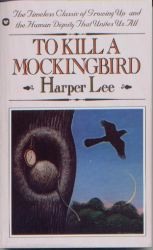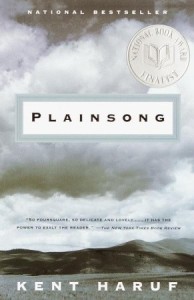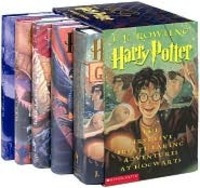What’s Changed, and What Hasn’t, in the Town That Inspired “To Kill a Mockingbird”
 In a long piece for Smithsonian Magazine, Paul Theroux describes a visit to Monroeville, AL, home of author Harper Lee and inspiration for the fictional Maycomb in To Kill a Mockingbird:
In a long piece for Smithsonian Magazine, Paul Theroux describes a visit to Monroeville, AL, home of author Harper Lee and inspiration for the fictional Maycomb in To Kill a Mockingbird:
Monroeville is like many towns of its size in Alabama—indeed the Deep South: a town square of decaying elegance, most of the downtown shops and businesses closed or faltering, the main industries shut down. I was to discover that To Kill A Mockingbird is a minor aspect of Monroeville, a place of hospitable and hard-working people, but a dying town, with a population of 6,300 (and declining), undercut by NAFTA, overlooked by Washington, dumped by manufacturers like Vanity Fair Mills (employing at its peak 2,500 people, many of them women) and Georgia Pacific, which shut down its plywood plant when demand for lumber declined. The usual Deep South challenges in education and housing apply here, and almost a third of Monroe County (29 percent) lives in poverty.
Theroux’s piece anticipates the July 14th publication of Lee’s second novel, Go Set a Watchman, in which a grown-up Jean Louise “Scout” Finch returns home and reminisces about the trial of Tom Robinson that occurred 20 years earlier (the trial depicted in Mockingbird.) Ever since the announcement of the discovery and publication of this manuscript, Harper Lee’s only other novel, there has been speculation about whether this novel will be as good as her first.
There’s also been speculation about whether the second novel, set 20 years after the first, will portray a Maycomb essentially different. Or will it provide the same Southern vision?
And that’s the odd thing about a great deal of a certain sort of Deep South fiction—its grotesquerie and gothic, its high color and fantastication, the emphasis on freakishness. Look no further than Faulkner or Erskine Caldwell, but there’s plenty in Harper Lee too, in Mockingbird, the Boo Radley factor, the Misses Tutti and Frutti, and the racist Mrs. Dubose, who is a morphine addict: “Her face was the color of a dirty pillowcase and the corners of her mouth glistened with wet which inched like a glacier down the deep grooves enclosing her chin.” This sort of prose acts as a kind of indirection, dramatizing weirdness as a way of distracting the reader from day to day indignities.
In a bit more than a week we’ll find out if Go Set a Watchman, written long ago but published only now, is an anachronism in an age when “few Southern writers concern themselves with the new realities” of poverty, education, and race relations in the American South.
What novelist Kent Haruf taught me about writing and life
 Michael Rosenwald, a reporter for the Washington Post, talks about what novelist Kent Haruf meant to him. Rosenwald enrolled in Haruf’s beginning fiction class at Southern Illinois University in 1993, six years before the publication of Plainsong, Haruf’s break-out novel.
Michael Rosenwald, a reporter for the Washington Post, talks about what novelist Kent Haruf meant to him. Rosenwald enrolled in Haruf’s beginning fiction class at Southern Illinois University in 1993, six years before the publication of Plainsong, Haruf’s break-out novel.
Storytelling, I’d learn, is about what happens next, and this story, about what happened after I met Kent, proves that what he taught me about stories is true: They have the power to exalt and transform. In this story, a little-known writer — gentle, fatherly, good — shapes a young man’s life, becomes renowned and never changes.
Although Haruf wrote fiction and Rosenwald concentrated on nonfiction, the two remained close:
After the success of “Plainsong,” Kent moved back to Colorado to write full time. I’d call him now and then. We began e-mailing, teasing each other about football, sharing news of what we’d read lately. And I began to see him more and more in my life. He was in the stories I pursued about ordinary people, in the strands of dialogue I’d hear and jot down, in the kindness I’d extend to students asking for advice. “Find your Kent,” I’d tell them.
Such a moving tribute to Haruf, who died last November. May we all find our own Kent.
10 influential pulp novels that are criminally good
Pulp fiction is called that because it first appeared in the early 20th century in fiction magazines published on cheap paper made from wood pulp. Read why Molly Lynch recommends these pulp fiction novels:
- Doc Savage: His Apocalyptic Life by Philip Jose Farmer
- Lest Darkness Fall by L. Sprague de Camp
- Judgment Night by C. L. Moore
- John Carter of Mars by Edgar Rice Burroughs
- Red Harvest by Dashiell Hammett
- Sign of the Labrys by Margaret St. Clair
- Tunnel in the Sky by Robert A. Heinlein
- The Long Goodbye by Raymond Chandler
- No Good From a Corpse by Leigh Brackett
- Strangers on a Train by Patricia Highsmith
JK Rowling reveals why the Dursleys dislike Harry Potter so much
 J.K. Rowling may have finished the Harry Potter series, but she apparently can’t quite let it go. In a piece for her web site Pottermore, she explains the back story of the Dursleys’ dislike of their nephew Harry and the reason why Aunt Petunia does not offer Harry any work of kindness in the final novel of the series.
J.K. Rowling may have finished the Harry Potter series, but she apparently can’t quite let it go. In a piece for her web site Pottermore, she explains the back story of the Dursleys’ dislike of their nephew Harry and the reason why Aunt Petunia does not offer Harry any work of kindness in the final novel of the series.
Here Alison Flood fills in the history of Harry’s relationship with his aunt, uncle, and cousin, for those of us who have forgotten some of the details.

